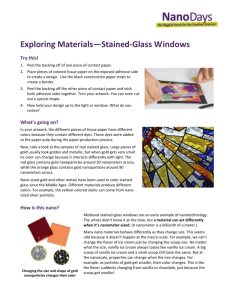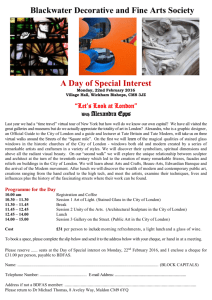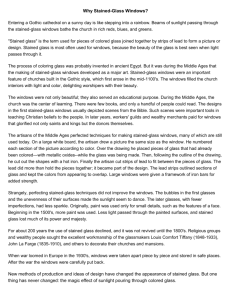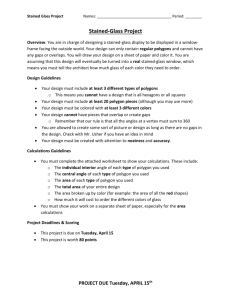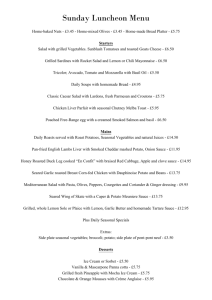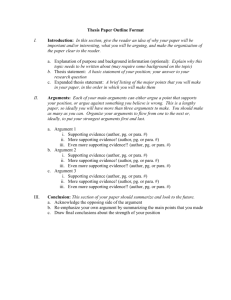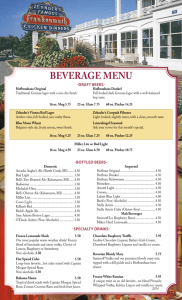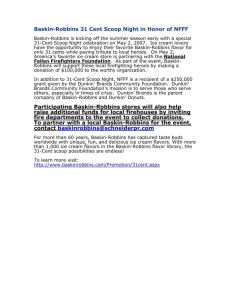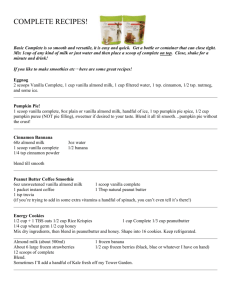Stained_glass_windows_worksheet
advertisement
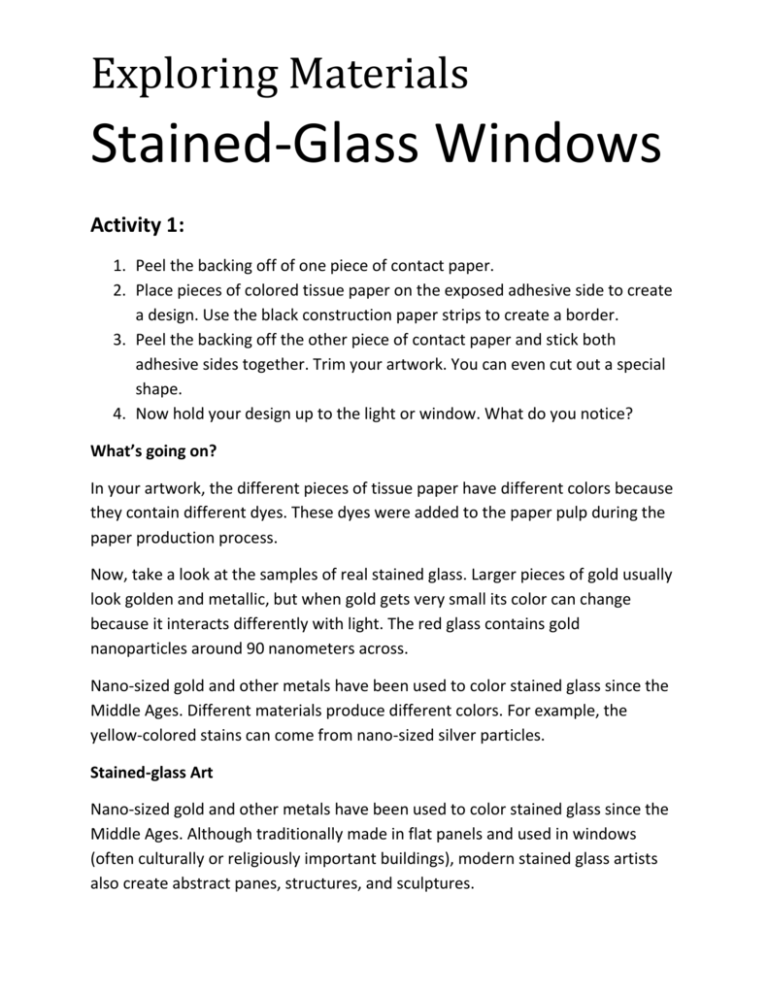
Exploring Materials Stained-Glass Windows Activity 1: 1. Peel the backing off of one piece of contact paper. 2. Place pieces of colored tissue paper on the exposed adhesive side to create a design. Use the black construction paper strips to create a border. 3. Peel the backing off the other piece of contact paper and stick both adhesive sides together. Trim your artwork. You can even cut out a special shape. 4. Now hold your design up to the light or window. What do you notice? What’s going on? In your artwork, the different pieces of tissue paper have different colors because they contain different dyes. These dyes were added to the paper pulp during the paper production process. Now, take a look at the samples of real stained glass. Larger pieces of gold usually look golden and metallic, but when gold gets very small its color can change because it interacts differently with light. The red glass contains gold nanoparticles around 90 nanometers across. Nano-sized gold and other metals have been used to color stained glass since the Middle Ages. Different materials produce different colors. For example, the yellow-colored stains can come from nano-sized silver particles. Stained-glass Art Nano-sized gold and other metals have been used to color stained glass since the Middle Ages. Although traditionally made in flat panels and used in windows (often culturally or religiously important buildings), modern stained glass artists also create abstract panes, structures, and sculptures. Exploring Materials Stained-Glass Windows How is this nano? Medieval stained-glass windows are an early example of nanotechnology. The artists didn’t know it at the time, but a material can act differently when it is nanometer-sized. Many nano materials behave differently as they change size. This seems odd because it doesn’t happen at the macro-scale. For example, we cannot change the flavor of ice cream just by changing the scoop size. No matter what the size, vanilla ice cream always tastes like vanilla ice cream. A big scoop of vanilla ice cream and a small scoop still taste the same. But at the nanoscale, properties can change when the size changes. For example, as particles of gold get smaller, their color changes. This is like the flavor suddenly changing from vanilla to chocolate, just because the scoop got smaller! Summary: What is the most interesting thing you learned during this exercise? ___________________________________________________________________ ___________________________________________________________________ ___________________________________________________________________ ___________________________________________________________________
